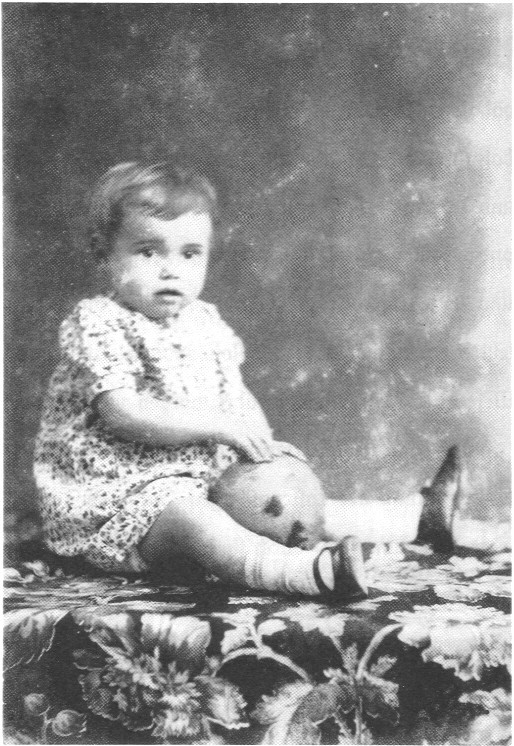
Did the fall through the window occur during the November pogroms? ("Reichskristallnacht" 9th-11th November 1938).
Until May 1940, the Youth Welfare Office in Harnburg had guardianship of both children.
However, no files remain from this time. Even in the Guardianship File of the Amtsgericht, pages 6-13 are missing. An obligatory insurance for home children did not exist at that time. The Averhoffstraße orphanage also burned down during the war, so there are no written records available and it is impossible to find out exactly what happened.
On 31st March 1939 an identity card with the letter "J" (Jude; Jew) was issued for the child.
Together with a photograph, this ID card indicates the rnove frorn orphanage to a foster home.
Why was the child fostered out privately?
Was it easier to conceal the consequences of the fall, this way?
The grandrnother knew nothing about what had happened.
And Irene's sister, Ingrid, saw the scars in 1994 for the first time.
The grandmother could finally visit her grandchild at the home of the foster parents, the Krauses.
Ingrid overheard a conversation where her grandmother said she thought the child was not happy there. She maintained that every time she came to visit Irene, her granddaughter, frightened, crawled under the bed.
But this proved to be wrong. Irene learnt to trust again. Her behaviour changed and she later developed into a happy, active child.
The foster rnother and her 13-year-old daughter knew how to give her a feeling of security.
She was only sad when Herr Krause, a cheerful man despite his war injuries, who always meant well, fetched a chair especially for her every midday and sang the popular song: "Ist denn kein Stuhl da, Stuhl da, Stuhl da, für meine Hulda, Hulda, Hulda." (Is no chair there for my Hulda.)
She knew, without anyone having told her, that indeed there was no chair for her because she did not really belong there.
